Library
All resources
1921 – 1940 of 2425 results
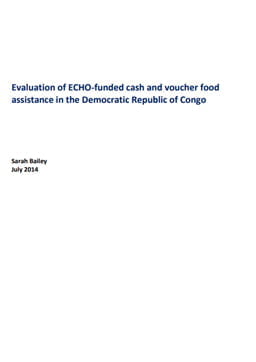
Evaluation of ECHO-Funded Cash and Voucher Food Assistance in the Democratic Republic of Congo
Report
People in eastern Democratic Republic of Congo (DRC) have long faced protracted conflict and instability resulting in the displacement of populations. In order to provide households affected by new displacements with timely access to food, ECHO funded the Norwegian Refugee Council (NRC), the Association...
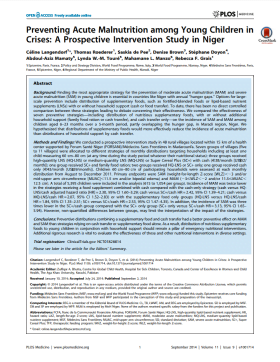
Preventing Acute Malnutrition Among Young Children in Crises: A prospective intervention study in Niger
Report
Governments and donor agencies need to know which preventative strategy is most effective, particularly among children under 2 years old who are most vulnerable to acute malnutrition. Here, the researchers compare the effectiveness of seven preventative strategies—including the distribution of...

Guidelines for Conditional Cash-for Rent Assistance for Syrian Refugees in Jordan
Guidelines and Tools
The objective of these guidelines is to inform Shelter sector partners of best practices for implementing conditional cash-for-rent assistance targeting Syrian refugees in the host communities. These guidelines have been developed by a taskforce of the Shelter Working Group.

Humanitarianism in the Age of Cyber-warfare: Towards the Principled and Secure Use of Information in Humanitarian Emergencies
Report
Humanitarian assistance is driven by information. From early warnings to needs assessments to final evaluations, information determines priorities and resource allocation. In addition, a crisis drives people to collect and share personal information that they otherwise wouldn’t: the names of missing...
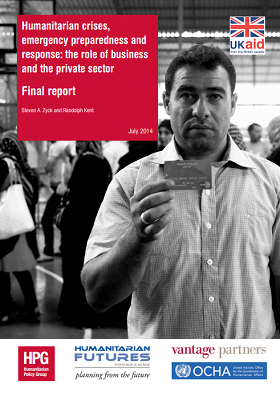
Humanitarian crises, emergency preparedness and response: The roles of business and the private sector – final report and case studies from Indonesia, Kenya, Jordan and Haiti
Report
The private sector has long been a major contributor to humanitarian action. At the community level, businesses frequently use their materials and resources to aid people affected by crises. As local markets recover and supply chains are repaired, crisis-affected people are once again able to access basic...

Is Cash Transfer Programming ‘Fit for the Future’? – Final Report
Report
This report presents the results of a 2013 research study entitled, Is Cash Transfer Programming ‘Fit for the Future’? The research was commissioned by the the CALP Network and undertaken by the Humanitarian Futures Programme (HFP), King’s College London. The project intends to understand...
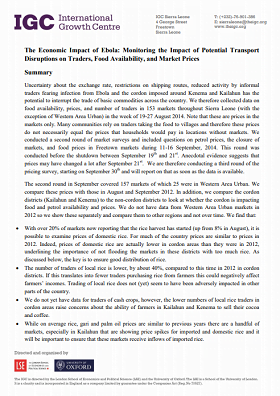
The Economic Impact of Ebola: Monitoring the Impact of Potential Transport Disruptions on Traders, Food Availability, and Market Prices
Report
Uncertainty about the exchange rate, restrictions on shipping routes, reduced activity by informal traders fearing infection from Ebola and the cordon imposed around Kenema and Kailahun has the potential to interrupt the trade of basic commodities across the country. We therefore collected data on food...
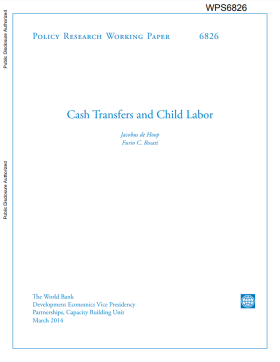
Cash Transfers and Child Labor
Policy paper
Cash transfer programs are widely used in settings where child labor is prevalent. Although many of these programs are explicitly implemented to improve children’s welfare, in theory their impact on child labor is undetermined. This paper systematically reviews the empirical evidence on the impact of...
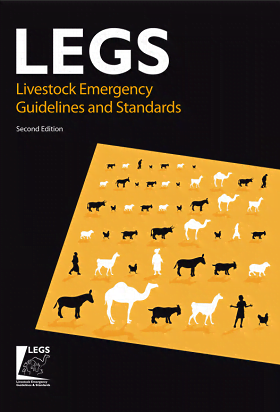
Livestock Emergency Guidelines and Standards: Second Edition
Guidelines and Tools
Livestock Emergency Guidelines and Standards (LEGS) is a set of international guidelines and standards for designing, implementing, and evaluating livestock interventions to help people affected by humanitarian crises. LEGS is based on three livelihoods objectives: to provide rapid assistance, to protect...
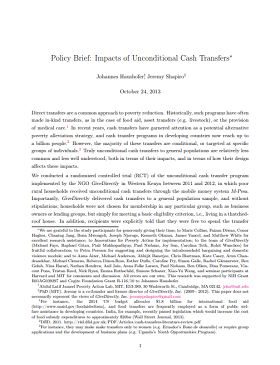
Policy Brief: Impacts of Unconditional Cash Transfers
Policy paper
This policy paper looks at a randomized controlled trial (RCT) of the unconditional cash transfer program implemented by the NGO GiveDirectly in Western Kenya between 2011 and 2012, in which poor rural households received unconditional cash transfers through the mobile money system M-Pesa. Importantly,...
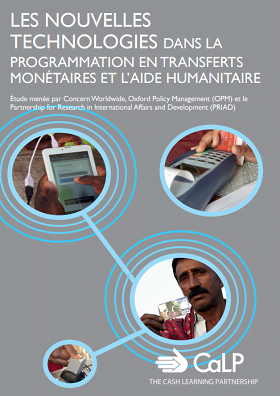
Les nouvelles technologies dans la programmation en transferts monétaires et l’aide humanitaire
Report
Le CALP Network a chargé Concern Worldwide de diriger un consortium également constitué d’Oxford Policy Management (OPM) et de Partnership for Research in International Affairs and Development (PRIAD) afin d’analyser l’utilisation actuelle des nouvelles technologies appliquées aux programmes...

Is Cash Transfer Programming ‘Fit for the Future’? – Annexes
Report
This Annex Package contains the full set of products developed in the course of a 2013 research study entitled, Is Cash Transfer Programming ‘Fit for the Future’? The research was commissioned by the Cash Learning Partnership (the CALP Network) and undertaken by the Humanitarian Futures Programme...
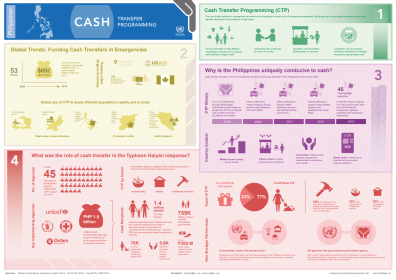
Cash Transfer Programming Infographic – OCHA
Presentation
OCHA (Office for the Coordination of Humanitarian Affairs) in the Philippines has produced a helpful infographic explaining the role of cash transfer programming in the Philippines Typhoon Haiyan response. The infographic explores several aspects of cash transfer programming, and examines the several...
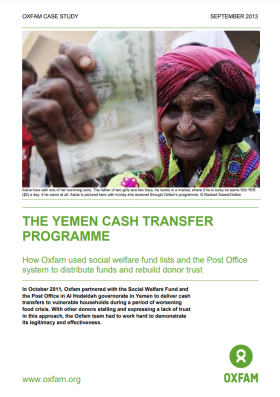
The Yemen Cash Transfer Programme
Report
This case study shows how Oxfam used social welfare fund lists and the Post Office system to distribute funds and rebuild donor trust. In October 2011, Oxfam partnered with the Social Welfare Fund and the Post Office in Al Hodeidah governorate in Yemen to deliver cash transfers to vulnerable households...
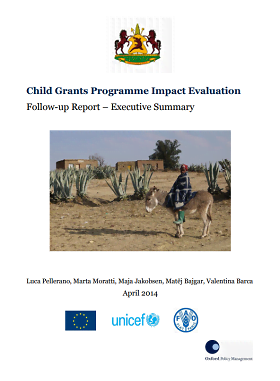
Child Grants Programme Impact Evaluation Follow-up Report – Executive Summary
Case Study
The Lesotho Child Grants Programme (CGP) is an unconditional social cash transfer targeted to poor and vulnerable households. It provides every quarter a regular transfer of between M360 and M7501 to poor households with children that are selected through a combination of Proxy Means Testing (PMT) and...
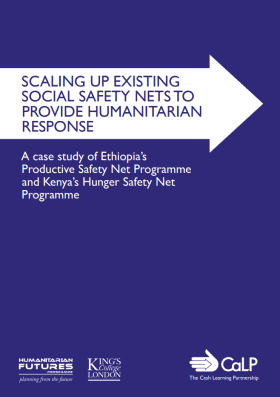
Scaling Up Existing Social Safety Nets to Provide Humanitarian Response: A case study of Ethiopia’s Productive Safety Net Programme and Kenya’s Hunger Safety Net Programme
Policy paper
A case study of Ethiopia’s Productive Safety Net Programme and Kenya’s Hunger Safety Net Programme. This thematic report has been undertaken as part of a 2013 research study entitled, Is Cash Transfer Programming ‘Fit for the Future’? The research was commissioned by the the CALP Network and...

The Impact of Cash and Food Transfers: Evidence from a randomized intervention in Niger
Report
There is little rigorous evidence on the comparative impacts of cash and food transfers on food security and food-related outcomes. This paper assesses the relative impacts of receiving cash versus food transfers using a randomized design. Drawing on data collected in eastern Niger, the paper finds that...
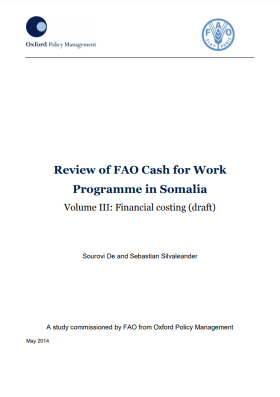
Review of FAO Cash for Work Programme in Somalia
Report
The objective of this costing study is to understand the absolute and relative magnitudes of various drivers of programme costs and to assess the cost-efficiency of the CFW Programme’s operations, using the total cost-to-transfer ratio (TCTR) for the programme which represents the total cost incurred by...
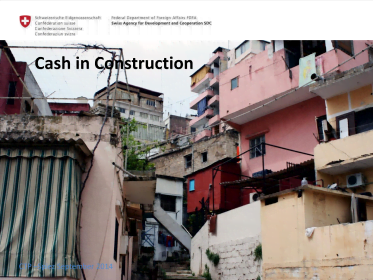
Cash in Construction
Presentation
This Powerpoint was used by SDC during a workshop on CTP and shelter/construction that took place in mid 2014. Click here to download a short introduction Powerpoint on Cash and Shelter from the same event.
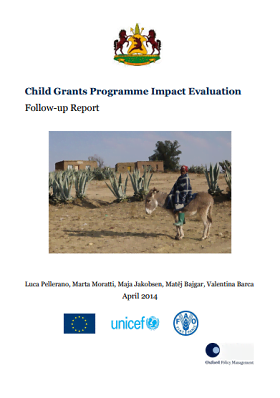
Child Grants Programme Impact Evaluation Follow-up Report
Report
The Lesotho Child Grants Programme (CGP) is an unconditional social cash transfer targeted to poor and vulnerable households. It provides every quarter a regular transfer of between M360 and M7501 to poor households with children that are selected through a combination of Proxy Means Testing (PMT) and...